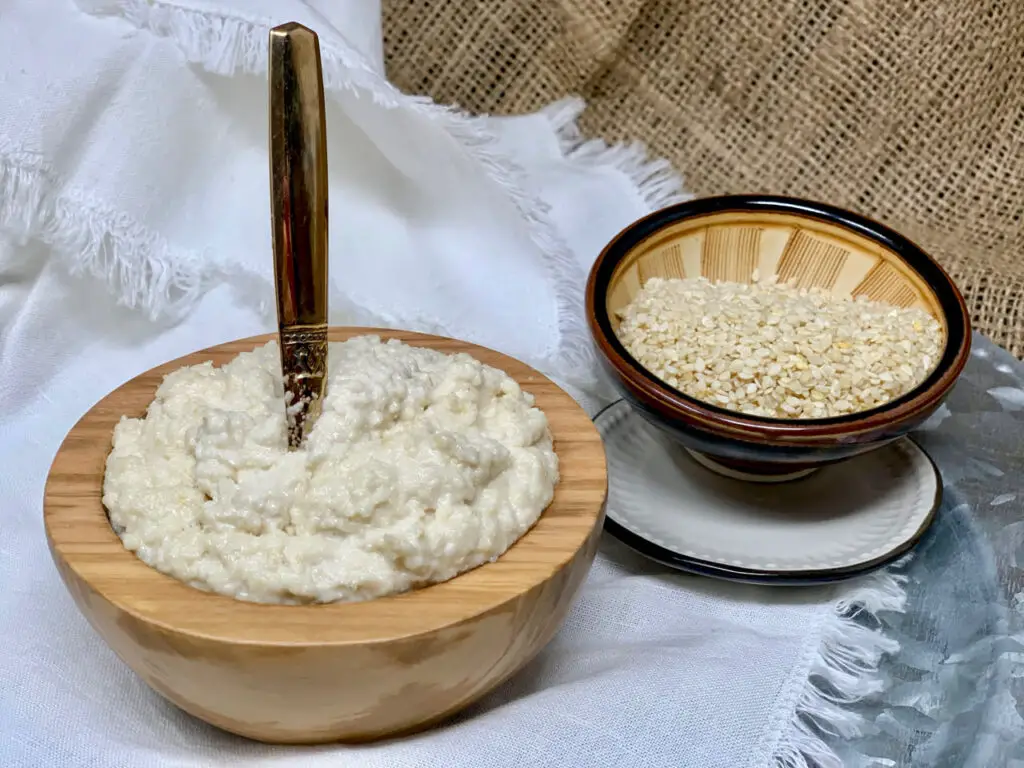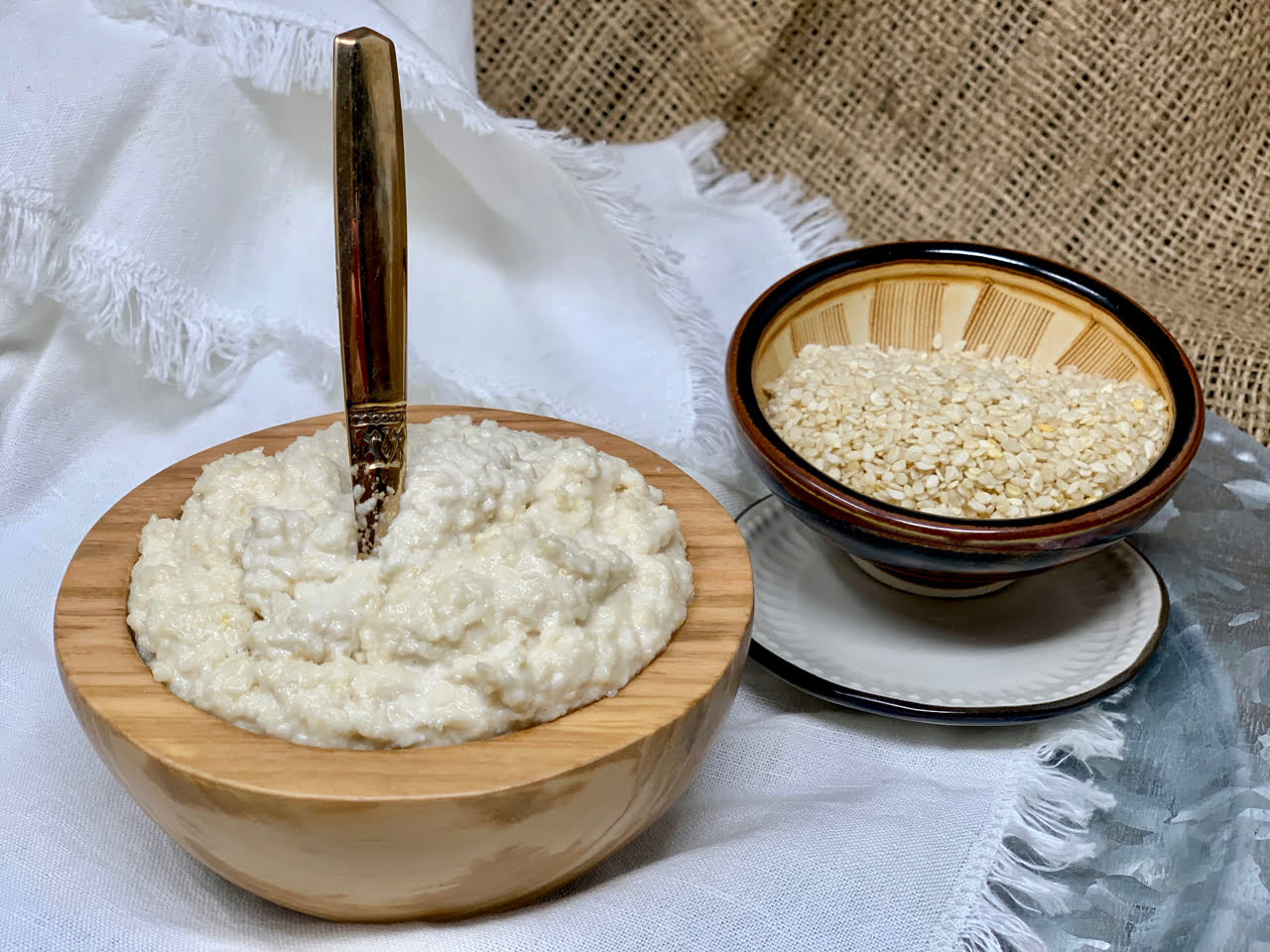The Best Homemade Tahini Recipe – Better Than Store Bought, is nuttier in flavor, toasted or raw, because it’s fresh, and it’s half the price.
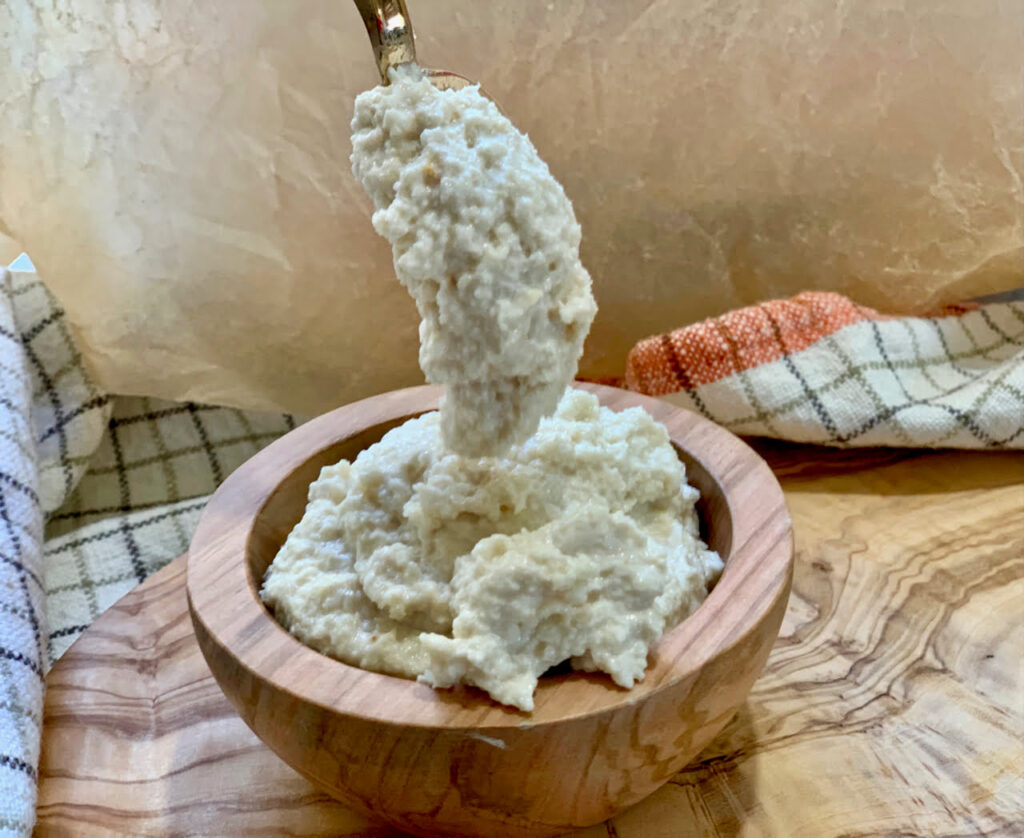
Sesame Seed Tahini
Who knew such a tiny seed could have such an amazing flavor and history!
I love knowing where my ingredients come from, and thanks to The Pacific Spice company, I was able to learn lots about sesame seed history.
While I’ve only known sesame seeds in the tahini I grew up with, both toasted and untoasted sesame seed oil and Halvah, my favorite candy as a kid, the history of sesame seeds fascinated me.
It was said that they are the oldest known oilseed plants in history and that the plant has been cultivated for over 4,000 years.
Leave it to the east and far east to gift the world with so many rich flavors and history of those flavors.

What Does The Word Tahini Mean And Where Does It Come From?
Growing up in a multicultural home, I heard so many different languages in my home that to this day, I pick up languages easily.
Arabic was spoken by my mother’s parents, of which I grew familiar with its sound, though never learned to speak more than ‘kitchen Arabic’.
That being said, the word ‘Tahini’ is an Arabic word, that means ‘to grind’.
Tahini is the Arabic word for sesame seeds that have been ground into a paste.
It’s probably a good thing that back in the day, folks didn’t have TV or radio, or even electric, for that matter.
The making of tahini back then was made by spending laborious hours grinding these tiny seeds with a mortar and pestle.
Authentic Homemade Tahini
Now that many people have embraced the passion for making their own nut butter, or nut milk, it’s time to realize something else.
Did you know that we can make many products, we assume must be store bought to be good, at home?
Shelf life for store bought tahini must mean it has preservatives in it, in order to make it last so long.
When we buy sesame seeds, they come with an expiration date before they turn rancid, a smell that is a definite indication that the oils in the seeds have gone bad.
What Is Tahini?
Until hummus became popular in America, most home cooks never heard of tahini.
Having grown up with a Syrian mother, tahini was always in our pantry and required an hour drive to a specialty market to buy.
Not anymore, most grocery stores sell it now!
Tahini is simply crushed sesame seeds with a little oil to emulsify the seed paste into a smooth butter.
The seeds are crushed and pureed until they form a paste.
Additionally, like nuts, there is oil in the seeds, so you will also benefit from the nutritional sesame seed oil when you add tahini to your recipes.
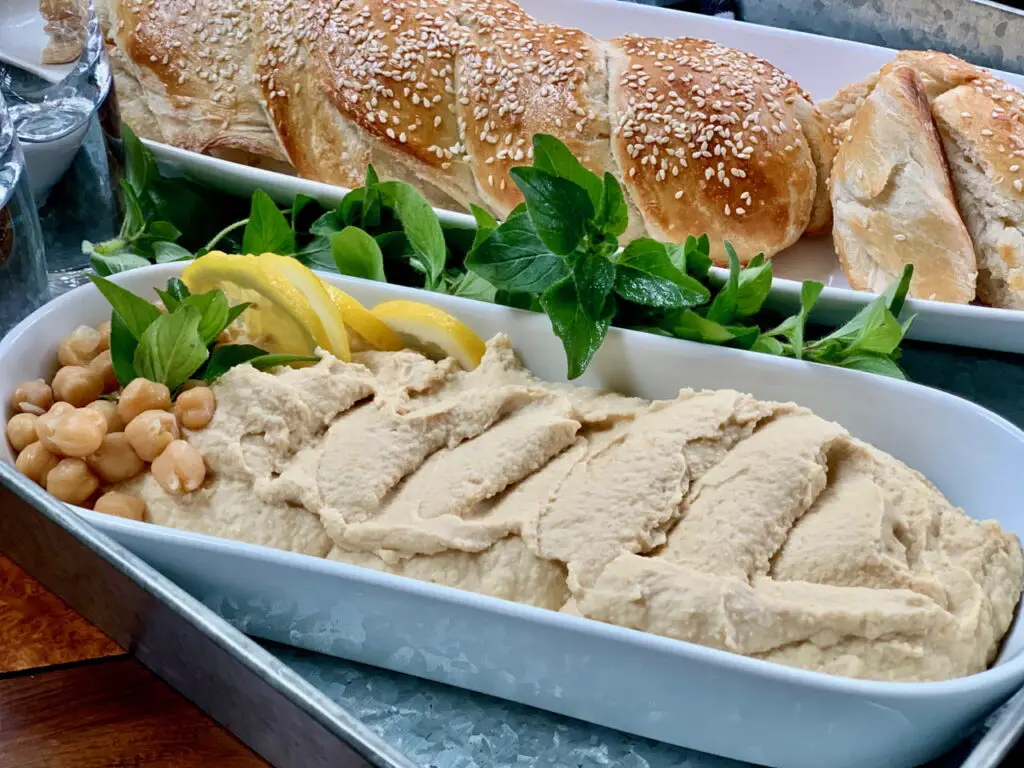
What Recipes Are Made With Tahini?
Surprisingly, there are many more recipes that are made with tahini than hummus and baba ganoush, which is how many of us first came to know tahini.
Undeniably tahini is what makes both of these luscious dips, luscious and gives them their velvety texture.
But let’s not just think of tahini for savory dishes.
I have made the most delicious cookies and ice cream with tahini but the real beauty is my Tahini Custard Pie; tahini in the crust, tahini in the custard filling.
And if you don’t take my word for it, go over to PBS and check out what the judges on The Great American Recipe had to say about it!
- Mediterranean Tahini Custard Pie – is made with a sweet creamy sesame tahini custard and a cookie-like sesame seed pie crust!

- Grandma’s Traditional Homemade Hummus – the authentic recipe, an easy, velvety puree of cooked chickpeas, her tahini recipe, garlic, lemons and love.
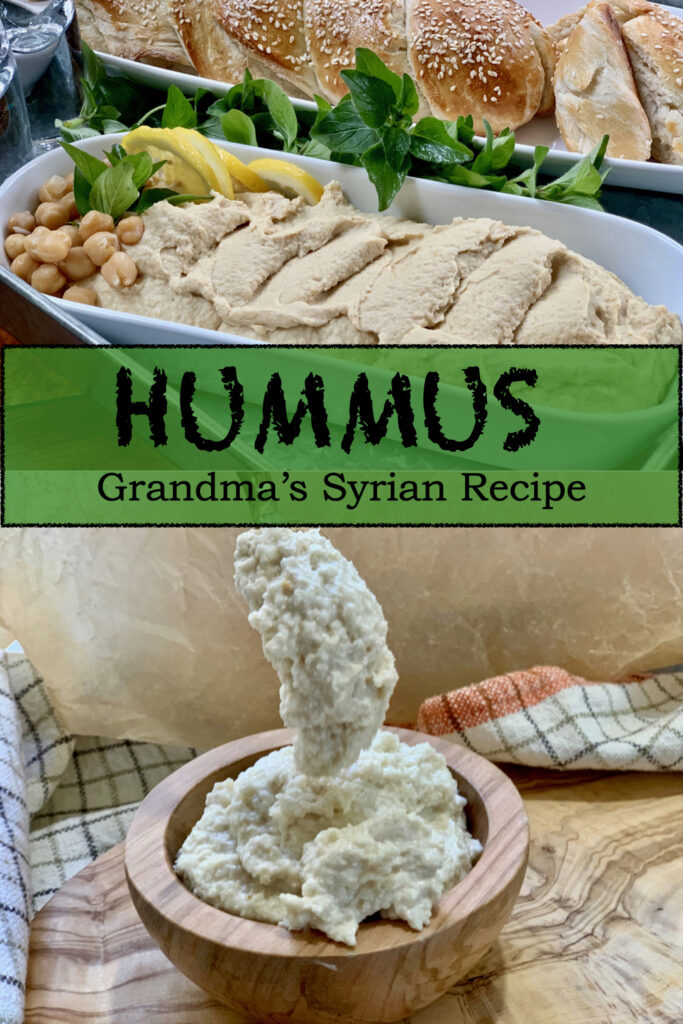
- Mediterranean Tahini Salad Dressing – with sesame seed paste, known as Tahini, lemons, garlic and good olive oil makes the best dressing and sauce.
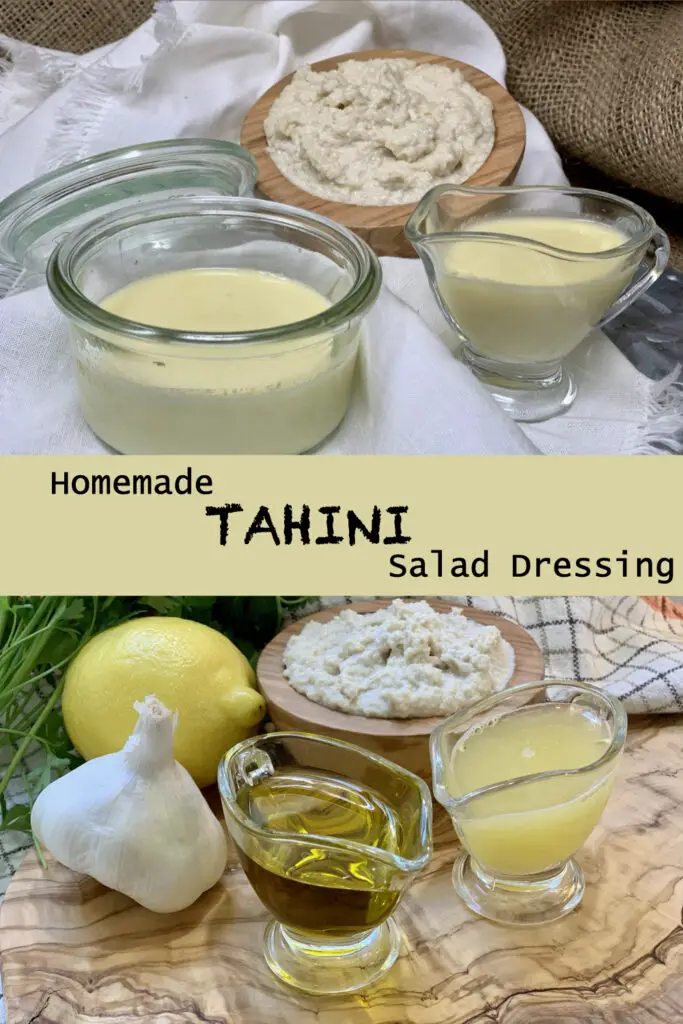
- Grandma’s Baba Ganoush Recipe – the creamy, garlicky, smoky eggplant dip, from a long line of Syrian grandmas?
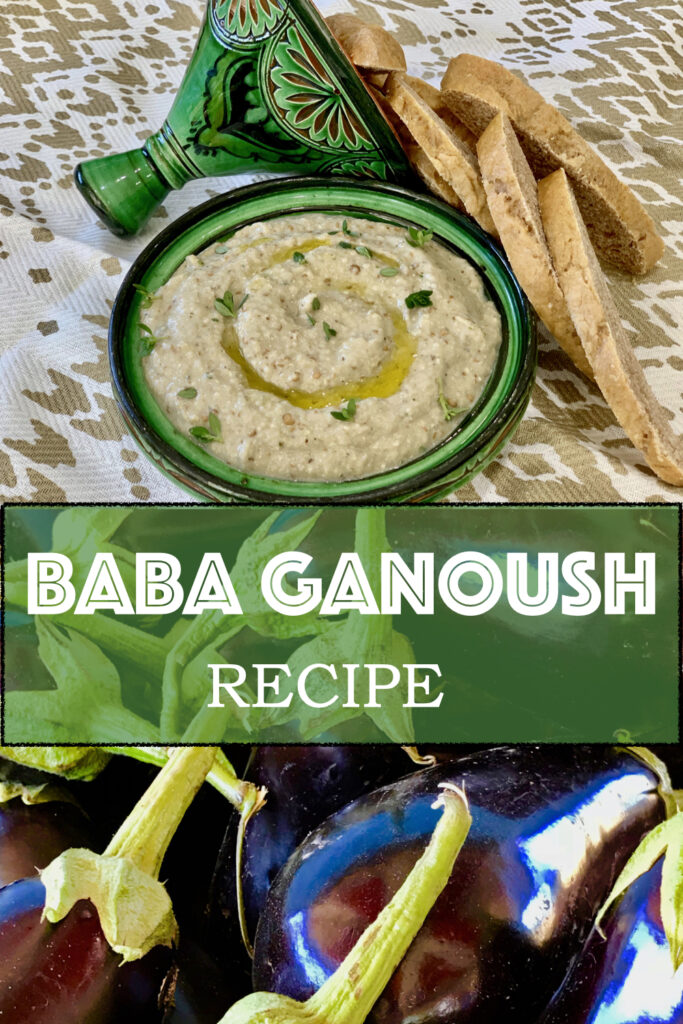
Origin Of Tahini
The origin of Tahini? My house! Hah, just kidding; my mother was a first generation Syrian American.
We always had weird food in our house, none of my friends had, so, I changed friends!
Once I started hanging out with friends from various Mediterranean regions, Italians, Greeks and Iranians, my food seemed normal.
In short, tahini was originally from each of these regions of the world and finally made its way to most American grocery stores.
While the convenience of buying a multitude of imported foods makes life easier now, I wouldn’t trade making many of these items myself.
How To Make Homemade Tahini
Should a lightly toasted flavor in your tahini be desired, you will toast the seeds first for just a few minutes, and I mean only a few.
If you prefer the natural raw, almost sweet taste of sesame seeds, then no toasting is necessary, and you are ready to jump right in.
First, we will want to soak the sesame seeds in water for 6 hours or overnight.
This can be done after toasting them, if you are looking for a more toasted flavor.
Then we will drain the seeds, place in a small processor or blender, and puree with a little salt and oil, preferably sesame seed oil or olive oil.
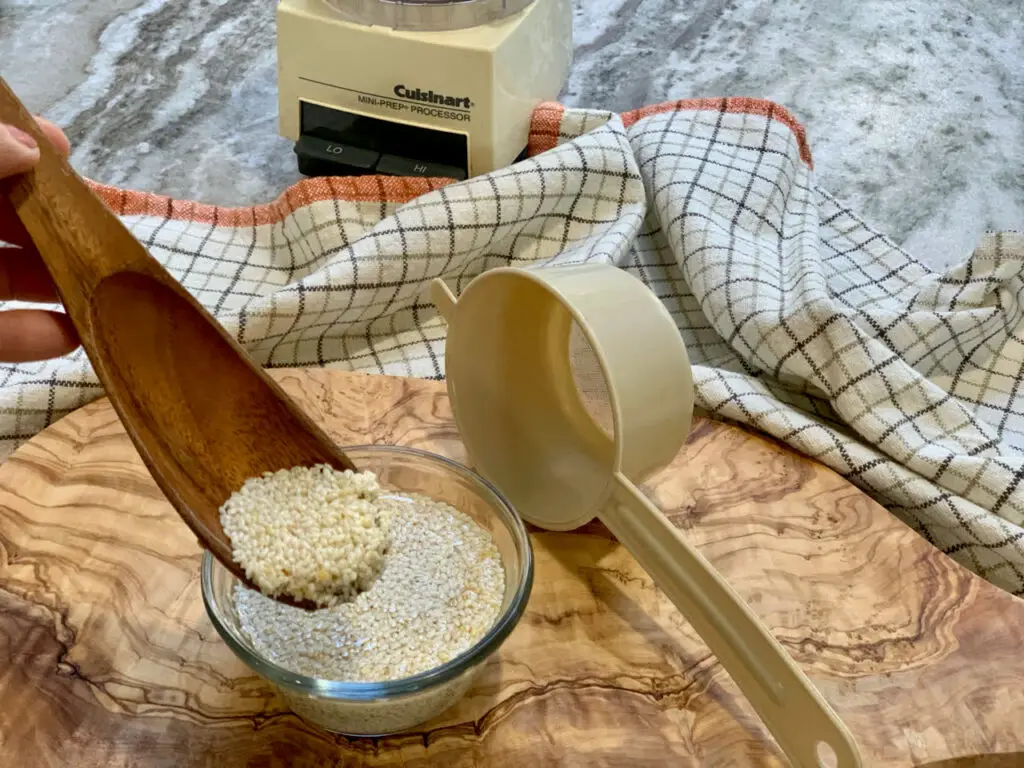
For Tahini Better Than Store Bought You Will Need A Food Processor
Since the seeds are so tiny, it takes time for the blade to really do its job, but no worries, eventually it becomes paste.
A large food processor is not necessary, just a small, yet strong, blender or processor.
Thank goodness we don’t have to make Tahini with a mortar and pestle, though that technique will work too!
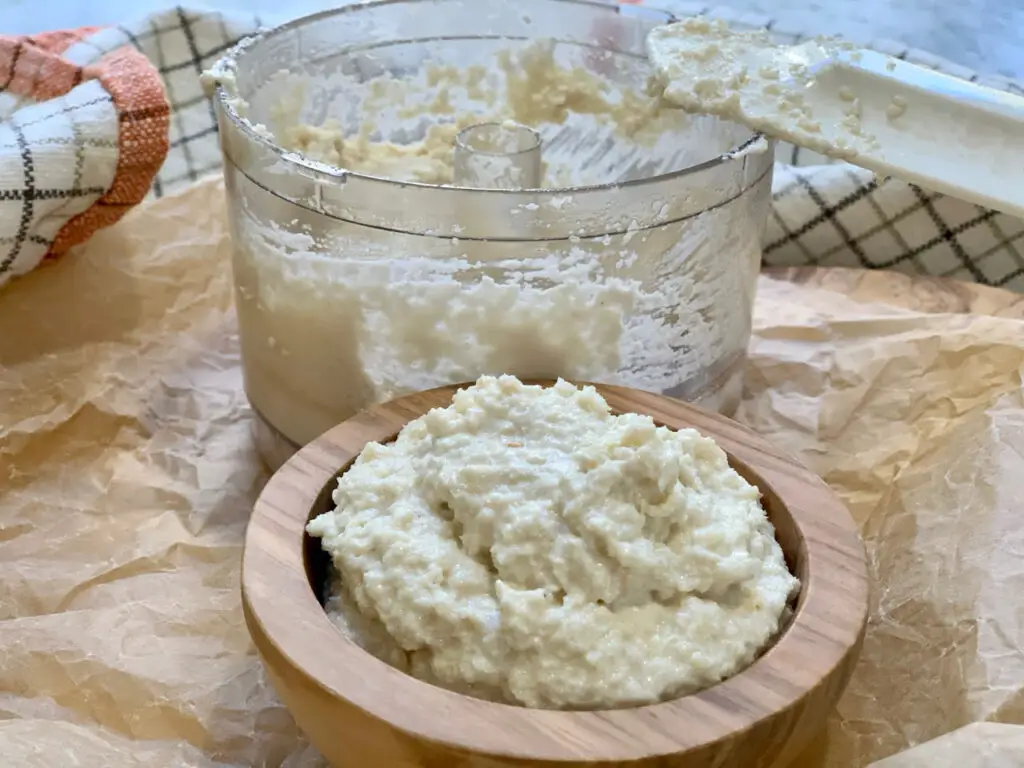
How To Store Homemade Tahini
The approach to storing homemade tahini is in an airtight container.
It can last for up to 6 months in the refrigerator.
Before using the tahini, it is best to let it sit room temperature for a bit, stir well to incorporate the separated oils from the pureed seeds.
Simply take what is needed and return the unused portion back to the fridge.
Also, it works quite well to freeze small batches of homemade tahini for a few months, but refrigeration works best, as freezing often changes the taste of foods.
Ingredients Needed
- Sesame seeds
- Salt
- Water
- Olive oil or sesame seed oil (untoasted)
Equipment Needed
- Bowl for soaking
- Food processor of blender – I find a food processor does the best job at pureeing seeds and nuts into a butter.
- Measuring cup
- Measuring spoons
- Airtight container
Best Homemade Tahini Recipe – Better Than Store Bought
Equipment
- Small food processor or blender
Ingredients
- 1 1/2 cups Raw sesame seeds *see notes for toasting
- 1/2 cup Water
- Salt to taste, optional
- 1/3 cup Olive oil or Sesame oil (untoasted) good quality either way
Instructions
- Soak sesame seeds in water for 6 hours or over night. Drain.
- In a small processor or blender place the drained sesame seeds, salt (if using) and oil. Puree until the tiny seeds pulverize and become a paste. The time it takes will depend on your blender or processor, about 5-minutes.
- Store in an airtight container for up to 6 months in the refrigerator.
Notes
